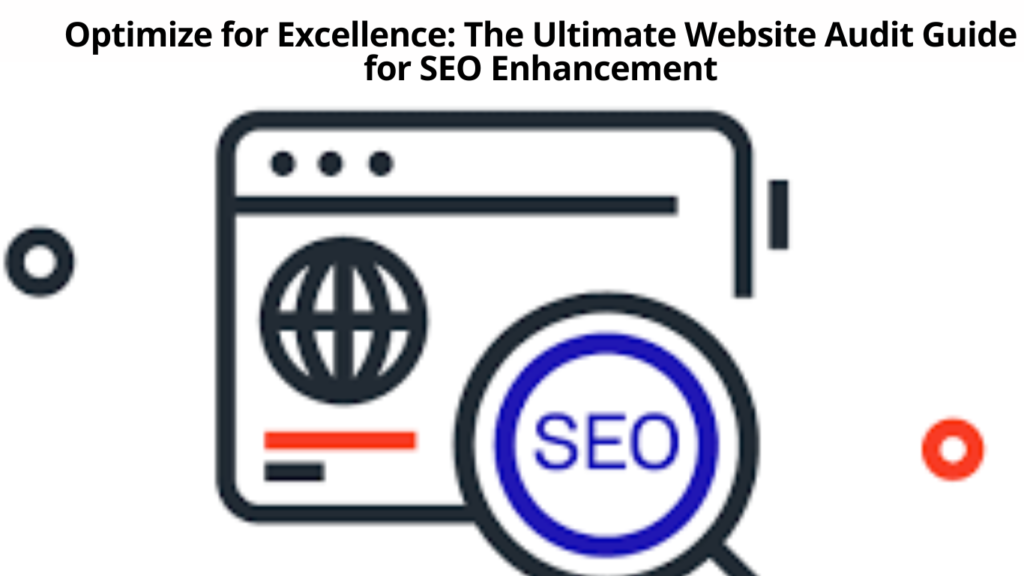Introduction
Search Engine Optimization (SEO) plays a pivotal role in ensuring your website stands out in the crowded online space. An essential part of SEO is conducting regular website audits. A comprehensive audit helps identify areas of improvement, optimize performance, and ultimately enhance your search engine rankings. This guide will walk you through the ultimate website audit process for SEO enhancement, ensuring your site is primed for excellence.
Understanding the Importance of a Website Audit
Before diving into the audit process, it’s important to understand why website audits are vital:
Improved Search Engine Rankings: Regular audits help identify SEO issues that could be hindering your site’s ranking potential.
Enhanced User Experience: A well-audited website ensures a seamless user experience, reducing bounce rates and increasing user engagement.
Content Optimization: Audits help you evaluate your content, ensuring it is relevant, up-to-date, and optimized for your target audience and keywords.
Technical Health: Identifying and fixing technical issues ensures your site runs smoothly, enhancing both user experience and search engine crawlers’ ability to index your site.
Step-by-Step Guide to Conducting a Website Audit
- Set Clear Goals
Start by defining what you aim to achieve with your audit. Common goals include improving search engine rankings, increasing website traffic, enhancing user experience, and boosting conversion rates. - Check Website Performance
a. Page Speed:
Use tools like Google PageSpeed Insights and GTmetrix to analyze your site’s loading speed.
Identify slow-loading pages and take steps to optimize them, such as compressing images, enabling browser caching, and minimizing CSS and JavaScript files.
b. Mobile-Friendliness:
Ensure your website is mobile-responsive by using Google’s Mobile-Friendly Test.
Optimize your site’s design and functionality to provide a seamless experience on all devices.
- Perform Technical SEO Analysis
a. Crawlability and Indexability:
Use tools like Screaming Frog or Ahrefs to crawl your website and identify issues such as broken links, duplicate content, and missing meta tags.
Check your robots.txt file and XML sitemap to ensure search engines can easily crawl and index your site.
b. On-Page SEO:
Review and optimize meta titles, descriptions, and header tags to include target keywords and accurately reflect page content.
Ensure all images have descriptive alt text and are optimized for faster loading times.
c. Structured Data:
Implement structured data (schema markup) to help search engines understand your content better and improve the chances of appearing in rich snippets.
Evaluate Content Quality
a. Content Relevance and Freshness:
Review your content to ensure it is relevant, engaging, and up-to-date.
Remove or update outdated content and consider adding new, high-quality content to address gaps.
b. Keyword Optimization:
Conduct keyword research to identify relevant keywords for your content.
Optimize your content by naturally incorporating these keywords, ensuring they align with user intent.
- Analyze Backlinks
a. Quality of Backlinks:
Identify and disavow any low-quality or spammy backlinks that could harm your SEO.
b. Link Building:
Consider guest blogging, creating shareable content, and networking within your industry to build valuable backlinks. - Monitor User Behavior
a. Google Analytics:
Analyze metrics such as bounce rate, average session duration, and conversion rates to identify areas for improvement.
b. User Feedback:
Collect user feedback through surveys or feedback forms to gain insights into their experience.
Implementing Audit Findings
After completing your audit, prioritize the identified issues based on their impact on SEO and user experience. Create a detailed action plan to address these issues, assigning responsibilities and setting deadlines to ensure timely implementation.
Regular Audits for Continuous Improvement
SEO is not a one-time task but an ongoing process. Conduct regular audits, at least quarterly, to stay ahead of any issues and continuously optimize your website for better performance and higher rankings.
Conclusion
A comprehensive website audit is essential for SEO enhancement, ensuring your site is optimized for both search engines and users. By following this ultimate website audit guide, you can identify and address key issues, improve your site’s performance, and achieve excellence in your online presence. Regular audits and continuous optimization will keep your website competitive in the ever-changing digital landscape, driving more traffic and conversions.

